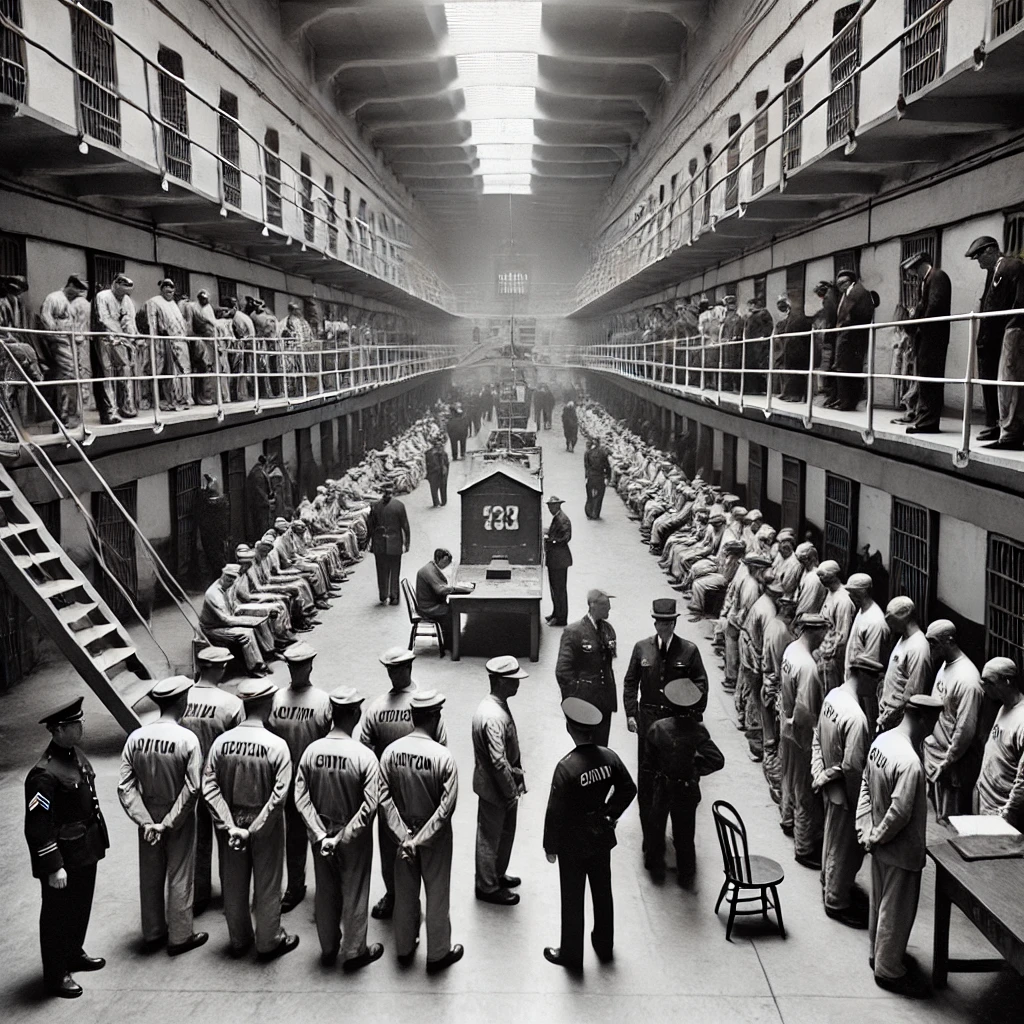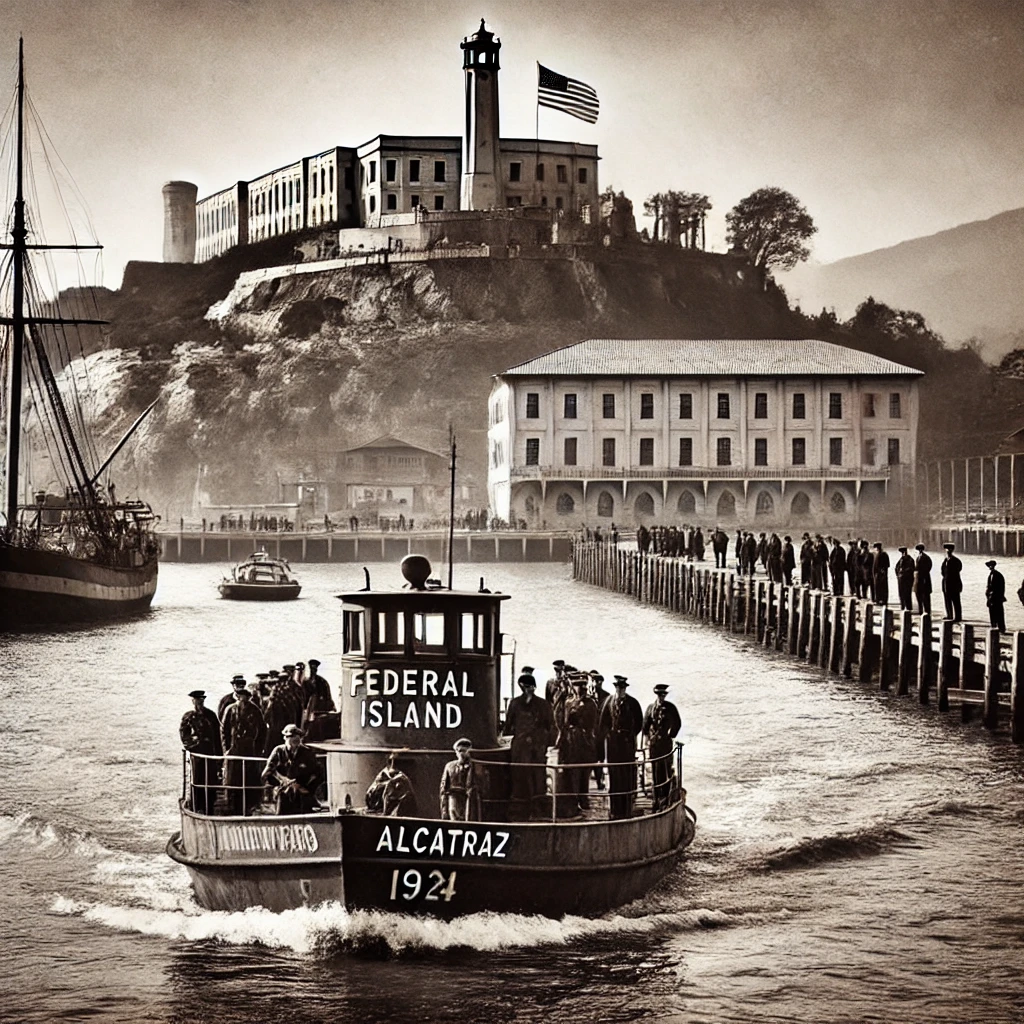On August 11, 1934, the first federal prisoners arrived at Alcatraz Island, marking the beginning of the infamous Alcatraz Federal Penitentiary. Located in San Francisco Bay, Alcatraz was chosen for its remote and isolated location, which was deemed ideal for housing some of the most dangerous and high-profile inmates. The island’s natural barriers, including cold, turbulent waters and strong currents, were considered to make escape attempts highly unlikely.
Alcatraz had previously been used as a military fortification and later as a military prison before being repurposed as a federal penitentiary. The decision to convert it into a maximum-security prison was part of the broader effort by the U.S. government to address the increasing challenges of managing and containing high-risk offenders. The opening of Alcatraz marked a new era in the American penal system, focusing on confinement and isolation as methods of controlling notorious criminals.

Life on Alcatraz
Upon its opening as a federal penitentiary, Alcatraz housed some of the most notorious criminals of the time, including figures such as Al Capone and George “Machine Gun” Kelly. The prison was designed to be escape-proof, with its stringent security measures including high fences, guard towers, and strict routines. Inmates were subjected to a rigorous regimen, and the harsh conditions of confinement were intended to deter escape attempts and control behavior.
Life on Alcatraz was marked by strict discipline and isolation. The prison’s unique location and design meant that inmates were cut off from the outside world, with only limited contact allowed. Despite the prison’s reputation for being one of the toughest in the U.S., it was not without its challenges, including tensions between inmates and staff and ongoing issues with prison management. The isolation and confinement of Alcatraz contributed to its infamy and the enduring fascination with its history.

The Legacy of Alcatraz Federal Penitentiary
Alcatraz Federal Penitentiary remained operational until 1963, when it was closed due to high operating costs and deteriorating infrastructure. The prison’s legacy, however, continues to capture the public’s imagination. Alcatraz became a symbol of maximum-security confinement and has been the subject of numerous books, films, and documentaries that explore its history and the stories of its infamous inmates.
Today, Alcatraz Island is a popular tourist destination, attracting visitors interested in its historical significance and its role in American penal history. The site is managed by the National Park Service, which preserves the island’s history and offers educational programs about its past. Alcatraz’s enduring appeal lies in its complex history and its status as a cultural and historical landmark, representing a unique chapter in the story of American corrections.

The arrival of federal prisoners on Alcatraz Island on August 11, 1934, marked the beginning of a new and controversial chapter in the history of the American penal system. The prison’s design, location, and reputation for harsh conditions made it a symbol of maximum-security confinement. Although it was closed in 1963, Alcatraz’s legacy endures as a powerful reminder of the challenges and complexities of managing high-risk offenders and the impact of isolation on both inmates and society.
